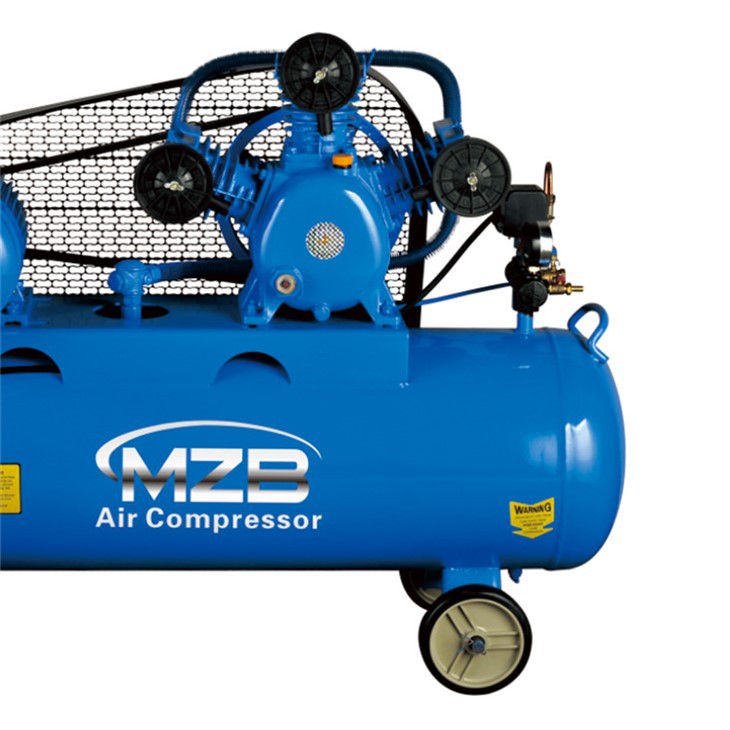As a supplier of C Type Piston Air Compressors, I understand the significance of safely transporting these valuable pieces of equipment. Ensuring that the compressor reaches its destination in pristine condition is not only a matter of customer satisfaction but also a reflection of our commitment to quality service. In this blog, I'll share some essential tips and guidelines on how to transport a C Type Piston Air Compressor safely.
Pre - transport Preparation
Inspection
Before initiating the transportation process, a thorough inspection of the C Type Piston Air Compressor C Type Piston Air Compressor is crucial. Check for any visible damages such as dents, scratches, or loose parts. Examine the hoses, belts, and electrical connections to ensure they are secure. If any issues are detected, address them immediately to prevent further damage during transit.
Cleaning
Clean the compressor to remove any dirt, debris, or oil that may have accumulated on its surface. A clean compressor is less likely to attract pests and is easier to handle. Pay special attention to the intake and exhaust ports, as any blockages can affect the compressor's performance.
Drainage
Drain all the fluids from the compressor, including the lubricating oil and condensed water. This not only reduces the weight of the compressor but also prevents any potential leakage during transportation. Follow the manufacturer's instructions carefully when draining the fluids to avoid any spillage.
Securing Loose Parts
Identify any loose parts such as the pressure gauge, control panel, or safety valves. Secure these parts using appropriate fasteners or padding to prevent them from moving around and causing damage. For example, use foam padding to cushion the pressure gauge and ensure it is tightly fixed to the compressor body.
Packaging
Selecting the Right Packaging Material
Choose high - quality packaging materials that can provide adequate protection for the C Type Piston Air Compressor C Type Piston Air Compressor. Corrugated cardboard boxes are a popular choice as they are lightweight, affordable, and offer good shock absorption. Additionally, consider using wooden crates for larger or heavier compressors, as they provide more robust protection.
Padding
Line the inside of the packaging with padding materials such as bubble wrap, foam sheets, or packing peanuts. Place the compressor in the center of the packaging and surround it with the padding to create a buffer zone. This helps to absorb any shocks or vibrations that may occur during transportation.
Sealing
Seal the packaging securely using strong packing tape. Make sure all the seams are properly sealed to prevent any dust, moisture, or pests from entering the package. If necessary, use additional strapping to reinforce the packaging.
Loading and Unloading
Using Appropriate Equipment
When loading and unloading the C Type Piston Air Compressor, use appropriate lifting equipment such as forklifts, hoists, or pallet jacks. Ensure that the equipment is in good working condition and is capable of handling the weight of the compressor. For example, if the compressor weighs more than a certain amount, use a forklift with the appropriate load capacity.
Handling Techniques
During loading and unloading, handle the compressor with care. Avoid dropping, tilting, or subjecting it to any sudden impacts. Lift the compressor from its designated lifting points to ensure even distribution of weight. If possible, have multiple people assist in the process to ensure a smooth and safe transfer.


Positioning
Place the compressor in an upright position during transportation. This helps to prevent any internal components from shifting and causing damage. If the compressor needs to be transported horizontally, make sure it is properly supported and secured to prevent it from rolling or sliding.
Transportation
Choosing a Reliable Carrier
Select a reliable transportation carrier with experience in transporting industrial equipment. Check their reputation, insurance coverage, and track record. A reputable carrier is more likely to handle the compressor with care and ensure its safe delivery.
Route Planning
Plan the transportation route carefully, taking into account factors such as road conditions, traffic, and potential hazards. Avoid routes with rough roads, sharp turns, or areas prone to flooding. If possible, choose a direct route to minimize the travel time and reduce the risk of damage.
Monitoring
If possible, monitor the transportation of the compressor using tracking devices. This allows you to keep an eye on its location and condition throughout the journey. You can also receive real - time alerts in case of any unexpected events such as delays or accidents.
Post - transport Inspection
Once the C Type Piston Air Compressor arrives at its destination, conduct a post - transport inspection. Check for any signs of damage that may have occurred during transportation. If any issues are found, document them immediately and contact the transportation carrier and our customer service team.
Conclusion
Transporting a C Type Piston Air Compressor safely requires careful planning, proper packaging, and meticulous handling. By following the tips and guidelines outlined in this blog, you can minimize the risk of damage and ensure that the compressor reaches its destination in optimal condition.
If you are interested in purchasing our C Type Piston Air Compressors or have any questions about transportation or other aspects of our products, please feel free to contact us for a detailed discussion and procurement negotiation. We are committed to providing you with high - quality products and excellent service.
References
- Manufacturer's manual for C Type Piston Air Compressors
- Industry standards for transporting industrial equipment
- Best practices in packaging and shipping heavy machinery






